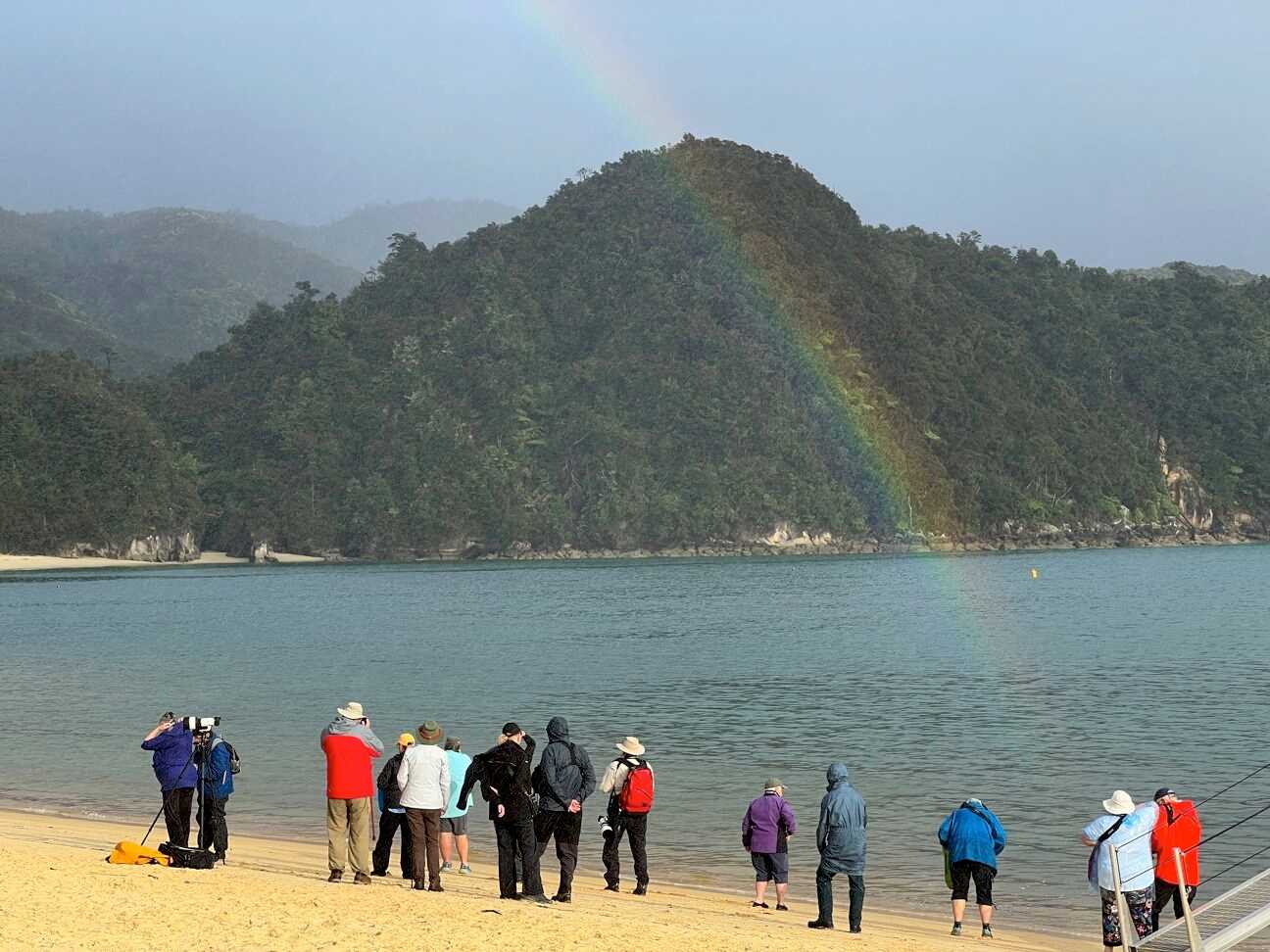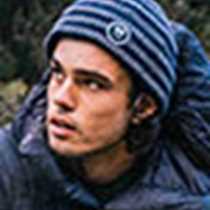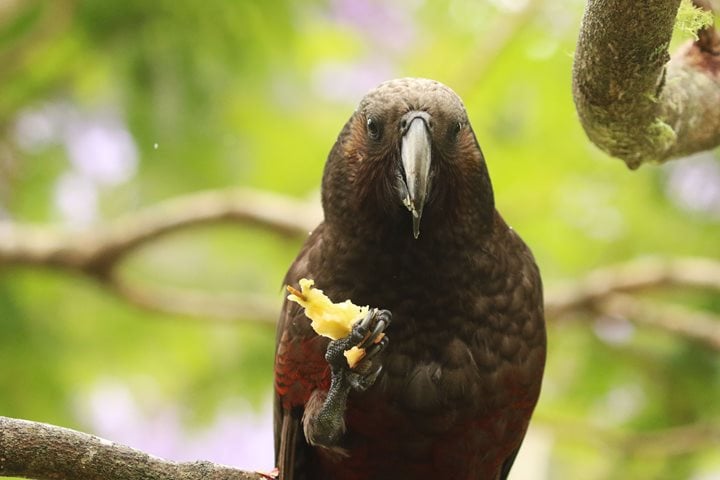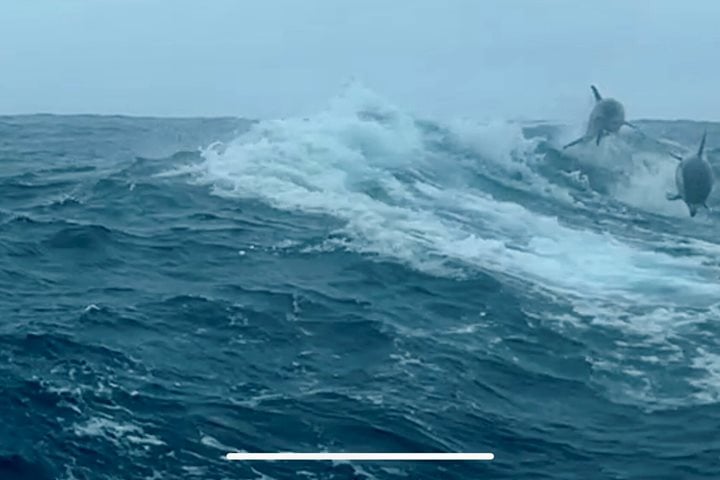Today began with an early breakfast while the ship was moored in Torrent Bay in Abel Tasman National Park at the top of South Island. Departing on Zodiacs, we joined a local operator to explore the beautiful coastal park.
Abel Tasman is usually known for turquoise water, sandy beaches, and warm sun. We experienced the tail end of a big rainstorm that dropped a summer’s worth of rain in one day on the northern part of New Zealand. As we began our walks through the forest of the park, the rain subsided, giving us an accurate experience of New Zealand’s temperate coastal forests!
Abel Tasman is a recovering ecosystem after deforestation led to most of the ancient kahikatea and tōtara forests to be felled. Our walk took us through a mature kānuka forest with large groves of silver ferns called ponga. Our guides showed us how the forest is recovering with secondary canopy trees like rimu.
Alongside the ponga groves were swathes of kawakawa, an important shrub for the Maori who used it in all sorts of applications because of its medicinal properties. Some bolder members of the group even copied the kererū and ate the kawakawa fruit, which has herby orange flesh. Arriving back at Torrent Bay, we split into groups to wander the stunning beachfront and swim in the warm water.
We were welcomed back aboard with an incredible feast of pizza and other scrumptious, well-earned food after the morning walk. With the anchor pulled, National Geographic Orion set off to reach the town of Napier on the East Coast. Our route took us into the Cook Strait between the North and South Islands, which was astoundingly calm and mirror flat.
As we cut through the still waters, Tua Pittman, the ship’s Cultural Navigator, regaled us with stories of amazing ocean voyages aboard traditional double-hulled wakas. The history of these incredible canoes is full of traditions and designs, and the canoes once sailed across this wild stretch of water in the Cook Strait.
Call +1.800.397.3348 or contact your travel advisor







